While noted for their historical charm and timekeeping abilities, some of Montreal’s clocks are reputed to be haunted. Most of Montreal’s haunted clocks are located on St. James Street, an area associated with the extreme desecration of French colonial cemeteries by various financial corporations.
Welcome to the sixty-fifth installment of the Haunted Montreal Blog!
With over 450 documented ghost stories, Montreal is easily the most haunted city in Canada, if not all of North America. Haunted Montreal dedicates itself to researching these paranormal tales, and the Haunted Montreal Blog unveils a newly researched Montreal ghost story on the 13th of every month! This service is free and you can sign up to our mailing list (top, right-hand corner for desktops and at the bottom for mobile devices) if you wish to receive it every month on the 13th!
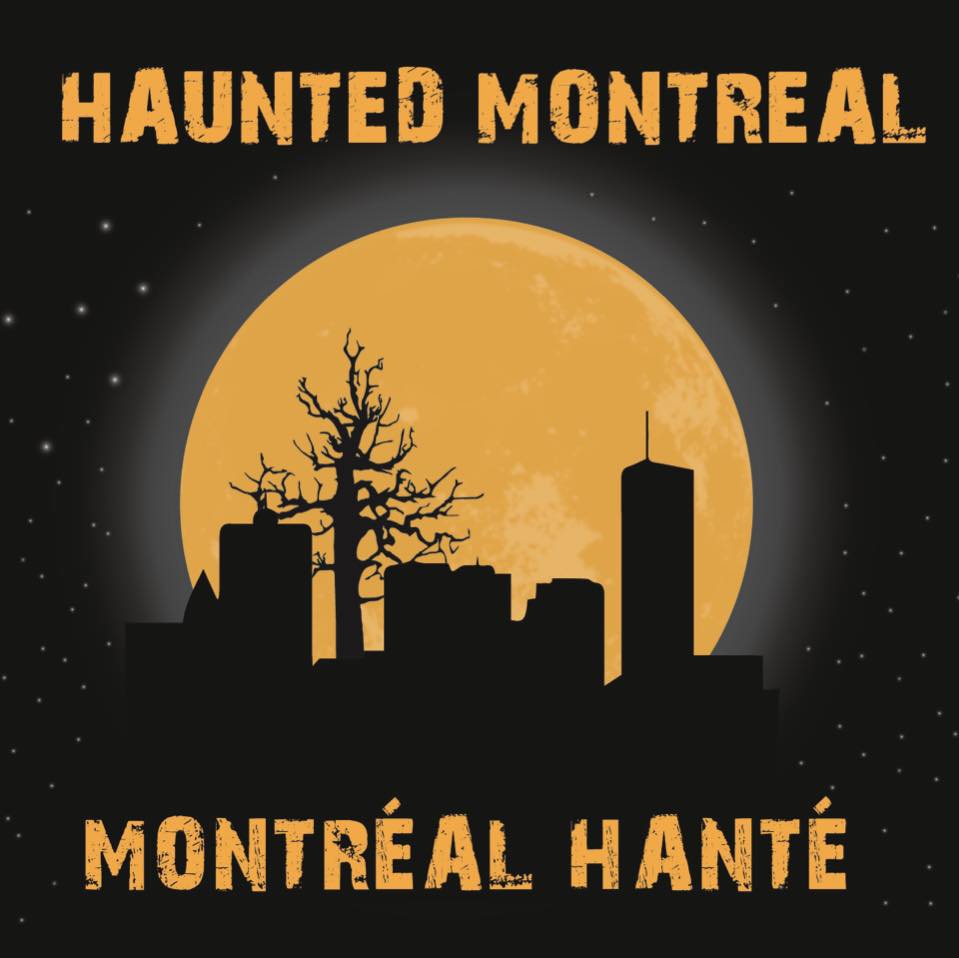
We are also thrilled to announce:
Winter Ghost Stories: A Québécois Tradition!
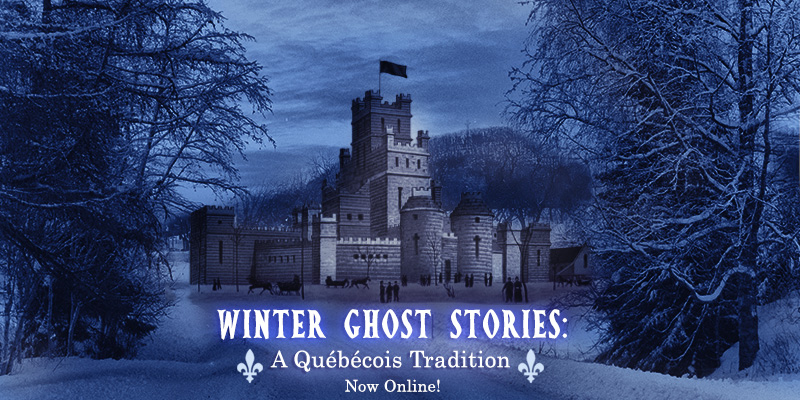
This virtual storytelling session resurrects the Québécois tradition of telling ghost stories during the long winter months.
Go back in time, from New France to Montreal’s Victorian Era, when creepy tales were told on winter nights around the hearth with a glass of mulled wine.
This online experience is ideal for:
- Virtual gatherings of family or friends
- Romantic dates
- As gifts
Both public and private sessions are available! Details here. More details are below in our Company News section!
Please spread the word to those who might be interested in an online winter ghost tour experience!
This month we examine Montreal’s werewolf legends. During the colonial era of New France, settlers on today’s Montreal Island were terrified of werewolves. Whenever sheep or other livestock were found bloodied and torn apart, stories circulated of nearby werewolves preying on them.
While sometimes the stories were simply used to inspire fear in children to behave, the Catholic Church also embraced these stories and suggested sinners who avoided Easter Lent could be turned into werewolves. The werewolf mania reached a new height in 1764 when an article was published in the Quebec Gazette.
Haunted Research
Werewolves and similar creatures have a long history of plaguing those living on the island of Tiohtià:ke/Montreal.
When the French began colonizing the Indigenous lands of Turtle Island in the early 1600s, strange European tales of werewolves came with the settlers.
Long before the arrival of the colonists, legends in First Nations cultures have featured similar creatures, such as Waheela, Amarok, Shukla Warakin and Wendigo.
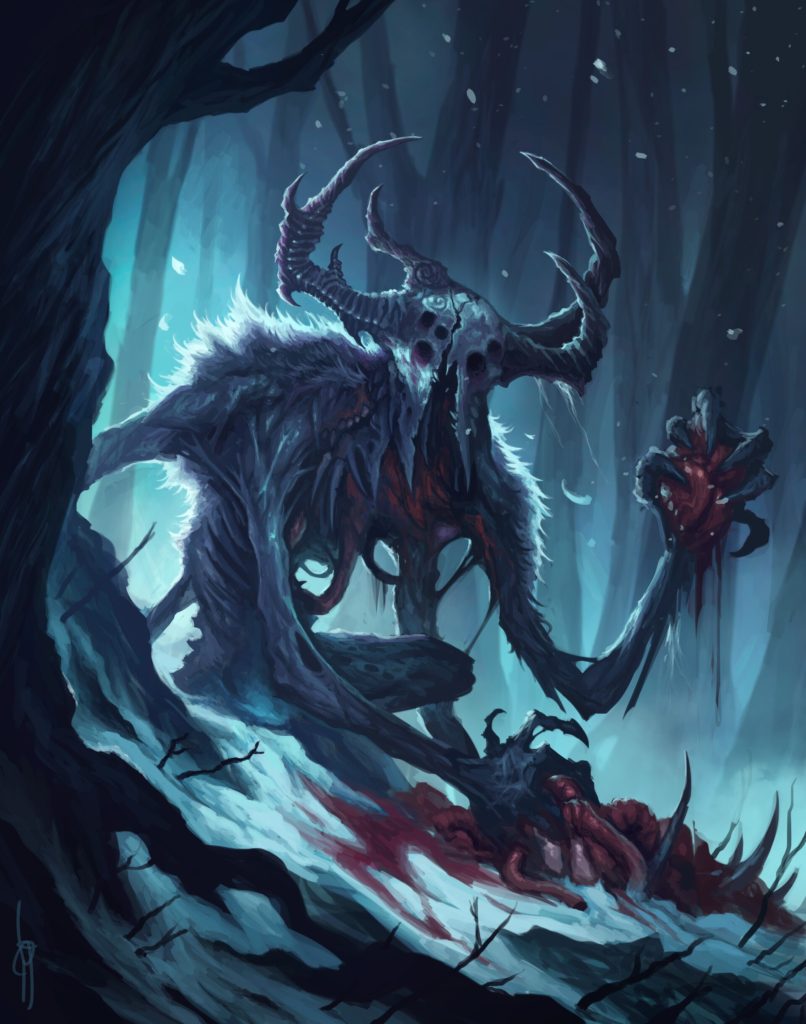
In the colonies of New France, werewolf sightings began in the 1600s. Memories of werewolves were fresh, as France had been fighting an epidemic of these creatures since the late 1400s. Like witches, werewolf suspects were frequently tried, convicted and burned at the stake. When French settlers left Europe for Canada, they brought those fears and stories with them.
Often the werewolf story-telling was used by the Catholic Church to inspire fear in its flock.
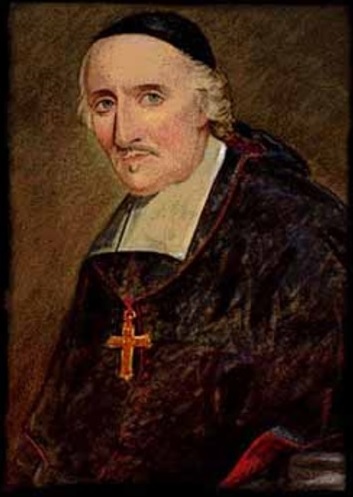
The clergy told tales of wolf-like beasts hunting down and killing Catholics who had failed to follow the rules of Lent – or worse, infecting them with lycanthropy.
Lycanthropy is the supernatural transformation of a person into a wolf, as is often recounted in folk tales.
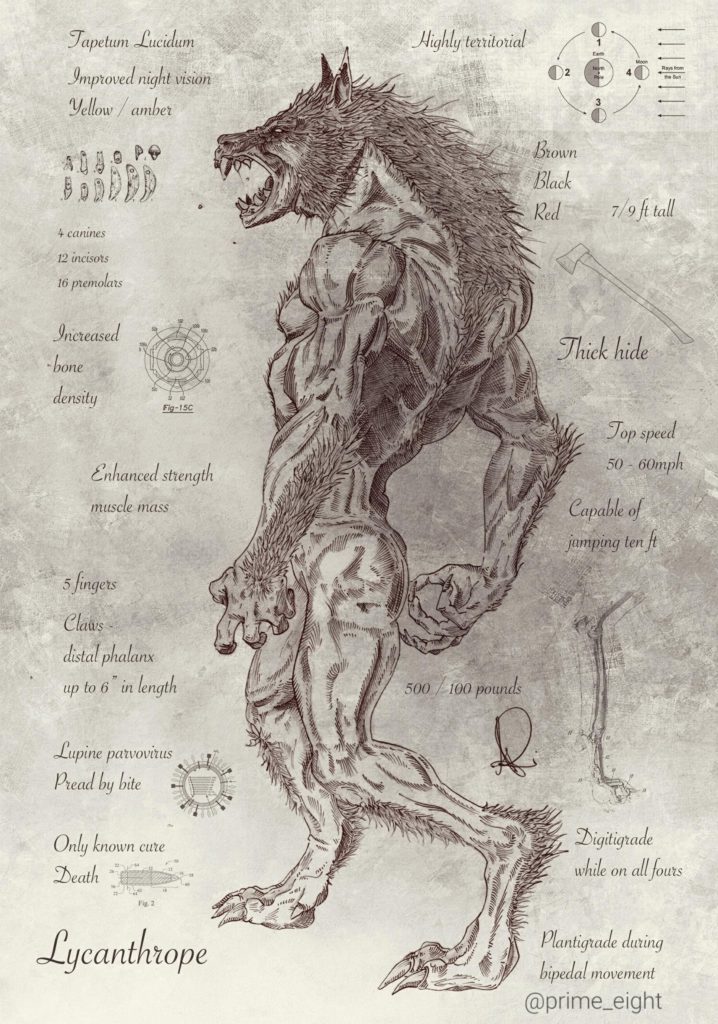
Other werewolf stories highlighted people who had sold their soul to the Devil or led a life of Sin.
Those transformed into werewolves were doomed to shapeshift not just with the full moon, but on every single night, sometimes for as many as 101 nights in a row. Most transformed into wolves, but others into dogs, cats, owls, goats, oxen and even some were-pigs.

Since the 4th century, the Catholic Church has been associating the wolf and other animals with the Devil. With such negative symbolism, the so-called “evil” animals were often hunted down and killed on sight.
Needless to say, in addition to the clergy, parents would also use these stories to keep their children obedient and in-line with the church’s doctrine.

One popular legend called The Devil and the Werewolves is set in the farmlands surrounding the French colony of Ville-Marie on today’s Montreal Island.
A farmer by the named of Jean Dubroise never did any work, and yet his farm was the most productive on the island.
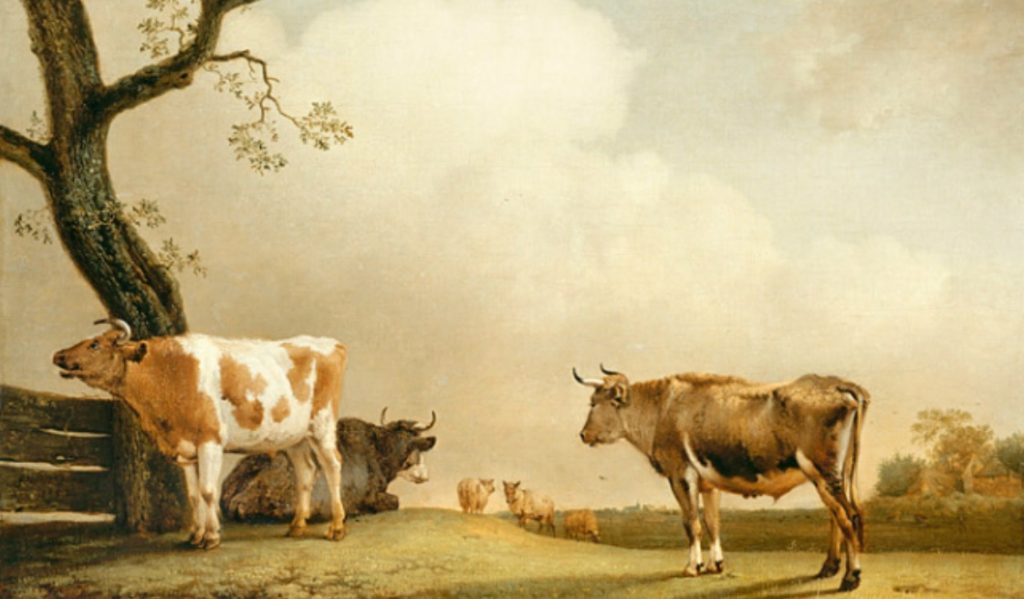
His house and barn were in impeccable shape and his crops flourished and provided bountiful harvests.
This puzzled his neighbors. If Jean had no hired help and was never seen working on his land, how was it that he could live so abundantly, with everything on his farm perfectly maintained?

Even stranger, late at night, neighbors often heard an unearthly roaring sound coming from Jean Dubroise’s property.
One evening, Jean’s next-door neighbor, a farmer named Alphonse, had had a lot to drink at the local inn.
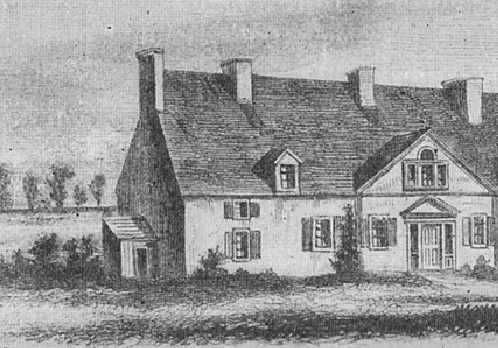
As he stumbled home, he decided to tempt the Fates by taking a short-cut across Jean Dubroise’s immaculate property. It would save him some time.
However, as he was navigating the fields, he heard the loud roaring noise above, louder than he had ever heard it before. Alphonse dove to the ground. Looking up, he saw a massive canoe flying over the farm.
The canoe touched down in a clearing next to Jean Dubroise’s farmhouse.
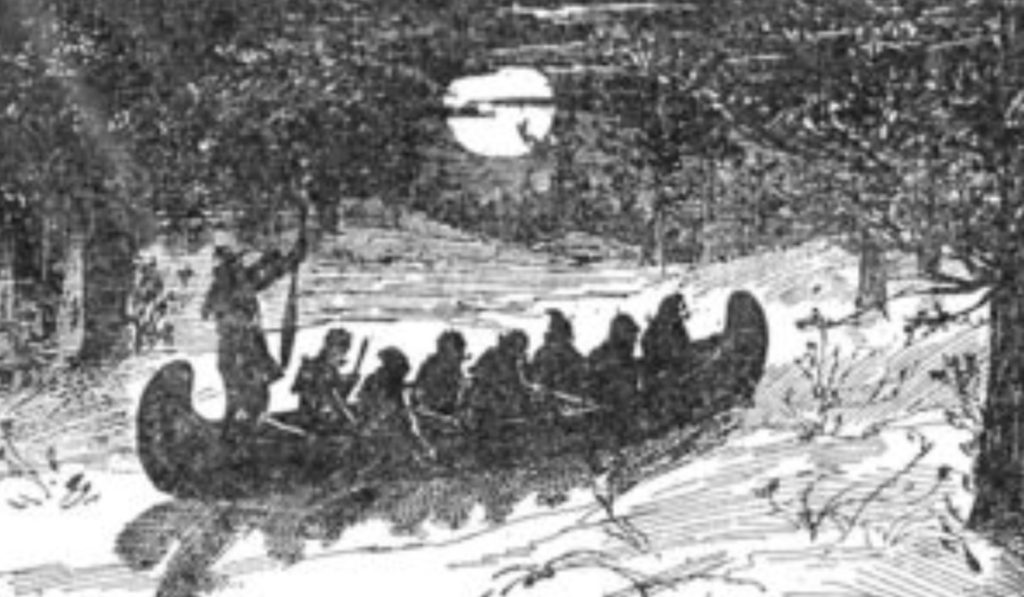
Next, it appeared as though The Devil himself stepped out of the canoe
Seeing a whip in his hand, Alphonse cowered under some shrubs. Listening through the brambles, he heard The Devil command: “Get out of the canoe!”
He snapped his whip! “Get out, I say!”
About twenty wolf-like beasts began scrambling out of the canoe. Unlike regular wolves, these creatures, although hunched, had the upright walk of humans.

Alphonse trembled, recalling the local legends of the Loup-Garous, or werewolves.
As he peeked out from under the bushes, he saw the werewolves get to work mending fences, milking cows, ploughing and doing all of the daily tasks required to run a farm.
As there werewolves worked, Jean Dubroise came out of his from door to have a drink and a chat with The Devil.
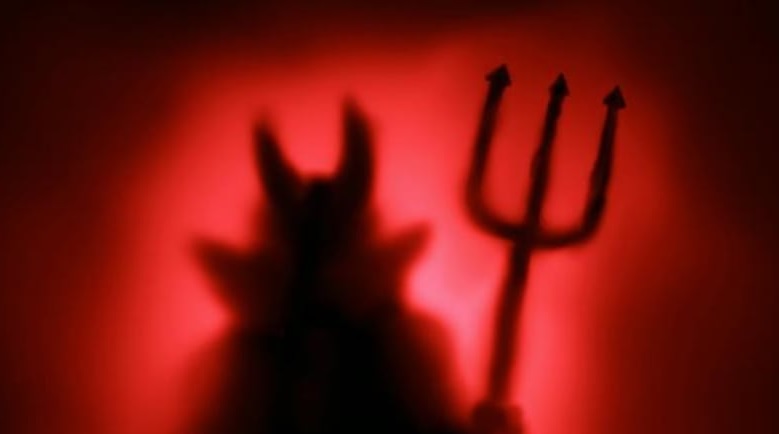
It was then that Alphonse understood the mystery – the lazy Jean Dubroise had sold his soul to The Devil in exchange for the werewolves doing all his work.
Alphonse prayed that the werewolves or The Devil would not find him under the bushes. He was extremely relieved when The Devil herded up his werewolves into the canoe and then flew off into the night, scorching the earth as it took off with bursting flames emitting from the canoe.
When the coast was clear, Alphonse rushed to the presbytery of the local priest.

Out of breath, he explained what he had seen to the attentive ears of the clergyman. The priest, upset by what he had heard, concocted a plan to deal with the werewolf situation plaguing his parish.
The next day, Jean Dubroise went into town. While he was away, the priest instructed members of his flock to descend on the farm, armed with buckets of Holy Water.
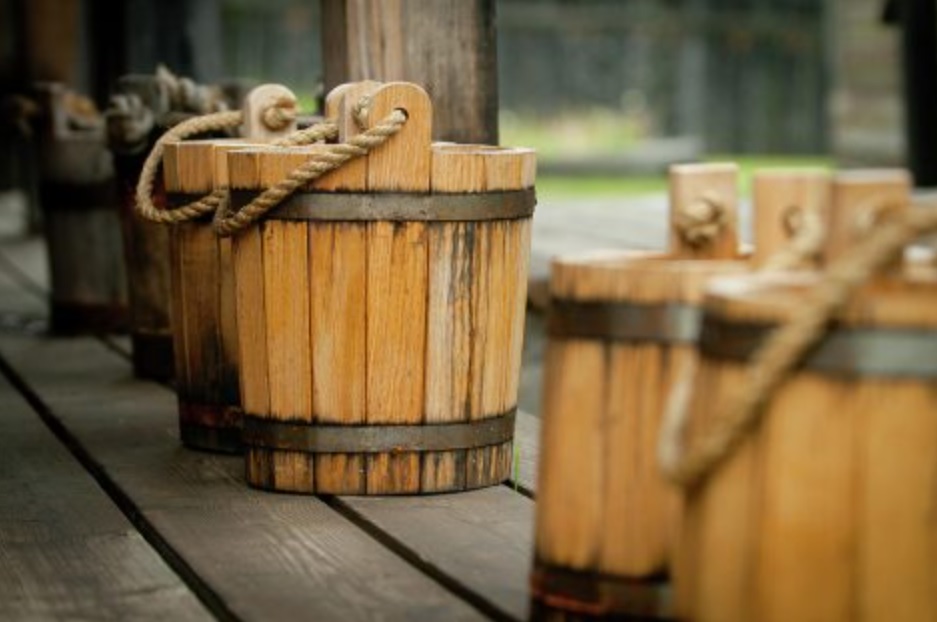
The loyal followers sprinkled the buckets upon the fields, the house and outbuildings. Once Jean Dubroise’s farm was soaked in Holy Water, the faithful servants hid themselves among the brambles to see what would happen next.
When the bells of midnight rang, the devout Catholics heard the roaring noise and watched as The Devil landed his massive canoe next to Jean Dubroise’s home.
As the Devil and the werewolves leapt out of the canoe and landed on the ground, they started shrieking in pain and agony.

They leapt about screeching, as though dancing on hot coals. The werewolves were terrified and scampered away from the property, into other farmsteads and forests.
As for The Devil himself, he was furious and suspected that Dubroise had betrayed him. He started to think that Dubroise had contacted the priest to soak the lands with Holy Water to try to save his soul.

Enraged, The Devil ripped the door off the house and threw it to the side. He then entered and dragged Jean Dubroise out of his bed and through the front door, where The Devil tossed him into the giant canoe. The Devil then entered himself, and the canoe took off, leaving fiery marks on the scorched lawn in its wake.
The men of the parish rounded up the werewolves and delivered them to the parish priest. The priest sharpened his knife and then pricked each one of them, the only known solution to turn a werewolf back into a human.

Once restored, the men fell to their knees. Trembling in fear, they begged the priest for forgiveness and promised to stop neglecting their religious duties. Following their salvation, the men never strayed from the church’s teachings and many of them went on to become very devout indeed.
As for Jean Dubroise, he was never seen again. However, his story lived on as a warning to other farmers not to let idleness lead them astray.

In another case, a woman born in the late 1880s explained that when she was a child, she had heard of a village with a rash of sheep killings. They were being attacked at night and left dead with torn out throats. The townsfolk suspected one of their neighbors was a werewolf so executed a search of his property. They discovered a wolfskin belt and the neighbor explained that when he put the belt on he transformed into a wolf and that he was responsible for killing the sheep.
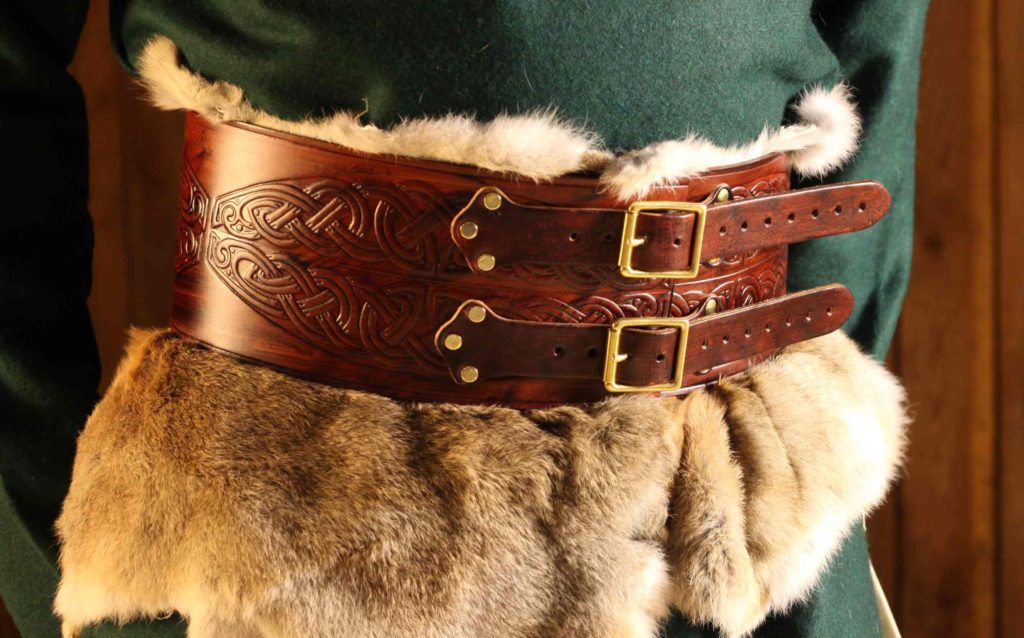
According to the legend, the townsfolk burned the belt in a cracking fire and that brought an end to the sheep killings.
Another classic werewolf tale saw a miller named Joachim Crete take in a weary French immigrant named Hubert Sauvageau. Soon local sheep and cattle were found ripped apart. When Joachim Crete encountered a werewolf on Christmas Eve, he attacked it with a scythe, effectively cutting of its ear and causing it to flee.
The next morning when Crete awoke, he found Sauvageau washing up in the bathroom. The sink was stained with blood and he noticed that his lodger was missing an ear.

While most of the werewolf reports were oral in the earlier days of the colonies, with the advent of the printing press and newspapers, the legendary creatures sometimes appeared in print.
For example, on December 2, 1767 the Quebec Gazette reported about a werewolf creature that was terrorizing the Kamasouraska area:
“We learn that a Ware-Wolfe, which has roamed throughout this Province for several Years, and done great Destruction in the District of Quebec, has received several considerable Attacks in the month of October last, by different Animals, which they had armed and incensed against this Monstre; and especially the 3rd of November following, he received such a furious Blow, from a small lean Beast, that it was thought they were entirely delivered from this fatal Animal, as it some Time after retired into its Hole, to the great Satisfaction of the Public. But they have just learn’d, as the most surest Misfortune, that this Beast is not entirely destroyed, but begins again to show itself, more furious than ever, and makes terrible Hovock wherever it goes.—Beware then of the Wiles of this malicious Beast, and take good Care of falling into its Claws.”

The previous June, the Quebec Gazette had reported that the werewolf was spotted outside the stone walls of Quebec City. Disguised as a beggar, the werewolf was hoping to better stalk its prey. Shortly thereafter, the newspaper reported that the werewolf was heading in the direction of Montreal. The newspaper warned its readers: “It is recommended to the Public to be as cautious of him as it would be of a ravenous Wolf.”
The werewolf is so ingrained in Quebec culture that academics write entire theses on the topic. In October, 2017, Félix-Antoine Charest published La représentation du loup-garou dans l’imaginaire québécois (Representation of the Werewolf in the Quebec Imaginary) at UQAM (the University of Quebec at Montreal).
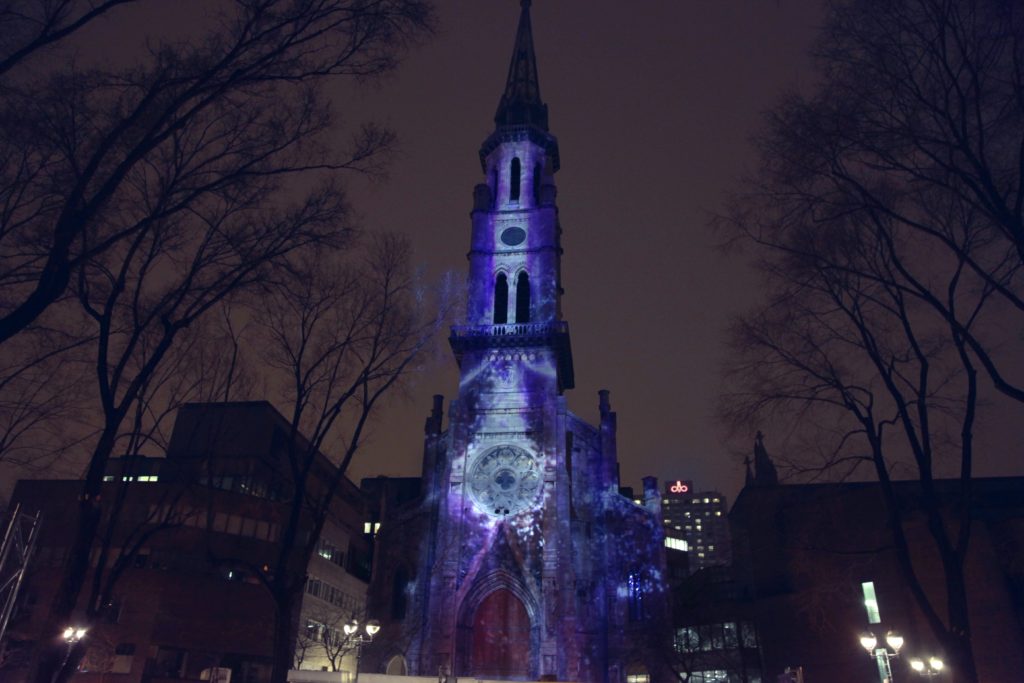
La Bibliothèque électronique du Québec even published a free, 154-page online book called Histoires de loups-garous Contes québécois du 19ème siècle (History of Quebec Werewolf Tales in 19th Century Quebec).
It seems that werewolves are also popular across the country and people can actually include the images of them while mailing letters and parcels. Canada Post issued two stamps depicting the legendary werewolf, one in 1990 and another in 1997.
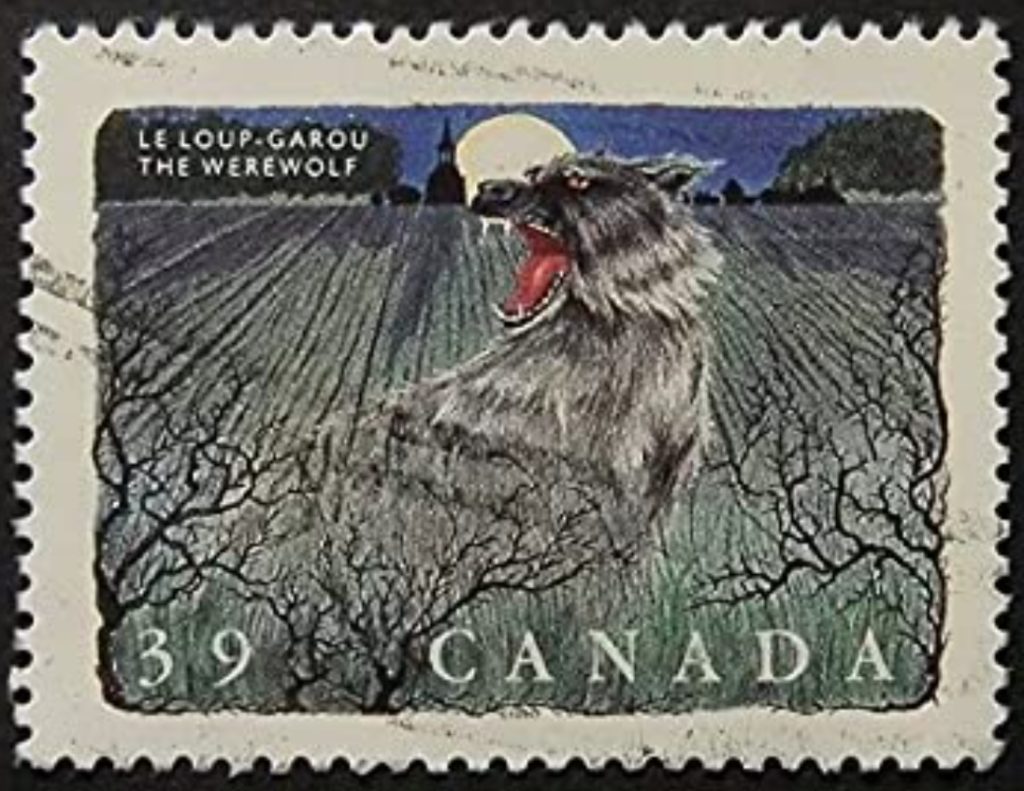
On an even lighter note, there is a board game called Loup-Garou pour une nuit (Werewolf for a Night) where players can enjoy the experience of being a werewolf after the sun has gone down.
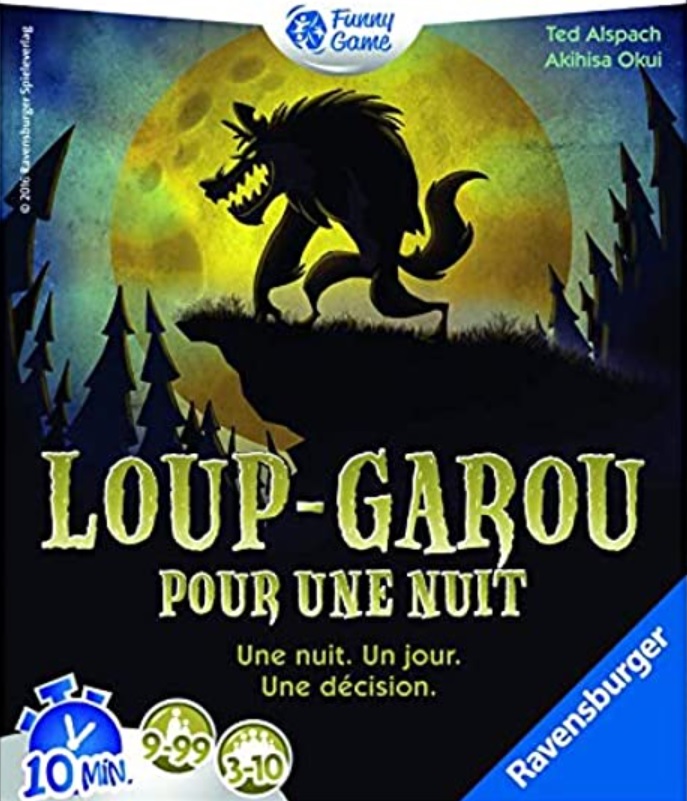
In conclusion, the werewolf has a long history of terrorizing Tiohtià:ke/Montreal and other regions of Quebec. The only question remaining is when will the next werewolf sighting be?
Company News
Haunted Montreal is thrilled to announce our new virtual haunted event:
Winter Ghost Stories: A Québécois Tradition!

Prepare a glass of mulled wine or brandy, fire up your computer and go back in time to celebrate the winter in the style of Montreal’s bygone days. From the days of New France, the telling of ghost stories around the fireplace was one of the most popular traditions in the city!
Guests will be regaled with winter ghost stories from Montreal’s past and hear about New France legends and the famous Winter Carnivals of the 1880s. Magnificent ice castles were built in Dominion Square – on top of the graves of tens of thousands of Cholera victims.
Learn the French-Canadian legend of a rustic ghost house – and the miser who was trapped inside it for decades! Hear all about Montreal’s haunted sewer network and a tragic accident one Christmas Eve that led to one collector being plagued by the deranged ghost of a vagabond.
Discover the most popular ghost story from the 1800s about a wealthy fur baron who was frequently spotted tobogganing down Mount Royal in his own coffin after his untimely death. Lastly, learn about Montreal’s most haunted hotel – and the ghostly Lady in White who brings freezing temperatures with her wherever she wanders!
Winter Ghost Stories: A Québécois Tradition is ideal for romantic dates, family gatherings and as Christmas gifts for those interested in Montreal’s deranged history and ghost stories!
Both public and private storytelling sessions are available in English and French.
Public storytelling sessions take place every Friday evening at 8 pm.
Private sessions are based on the availability of our professional actors and can be arranged by emailing info@hauntedmontreal.com.
Tickets are on sale now!
We also invite you to take part in our survey. The purpose is to get to know your tastes and preferences in order to develop virtual tours (Covid requires us to!) and in-person tours when the situation allows it! Thank you for taking your time to answer questions.
Haunted Montreal would like to thank all of our clients who attended a ghost walk, haunted pub crawl, paranormal investigation or virtual event during the 2020 – 2021 season!
If you enjoyed the experience, we encourage you to write a review on our Tripadvisor page, something that helps Haunted Montreal to market its tours.
Lastly, if you would like to receive the Haunted Montreal Blog on the 13th of every month, please sign up to our mailing list.
Coming up on February 13: Montreal’s Haunted Victorian-Era Ice Castles
During the 1880s, Montrealers held elaborate Winter Carnivals and erected massive ice castles on Dominion Square. These magnificent structures were lit up at night and colorful fireworks displays were launched to the awe of large crowds beneath the frosty night sky. The ice castles were also rumored to be haunted because Dominion Square was established on the old Saint Antoine Cholera Cemetery, which had closed in 1854 being full. With tens of thousands of corpses buried under the park, the word on the street was that the Dead were unhappy with these celebrations taking place on their cemetery. In 1889, the Dead got their revenge.

Donovan King is a postcolonial historian, teacher, tour guide and professional actor. As the founder of Haunted Montreal, he combines his skills to create the best possible Montreal ghost stories, in both writing and theatrical performance. King holds a DEC (Professional Theatre Acting, John Abbott College), BFA (Drama-in-Education, Concordia), B.Ed (History and English Teaching, McGill), MFA (Theatre Studies, University of Calgary) and ACS (Montreal Tourist Guide, Institut de tourisme et d’hôtellerie du Québec). He is also a certified Montreal Destination Specialist.

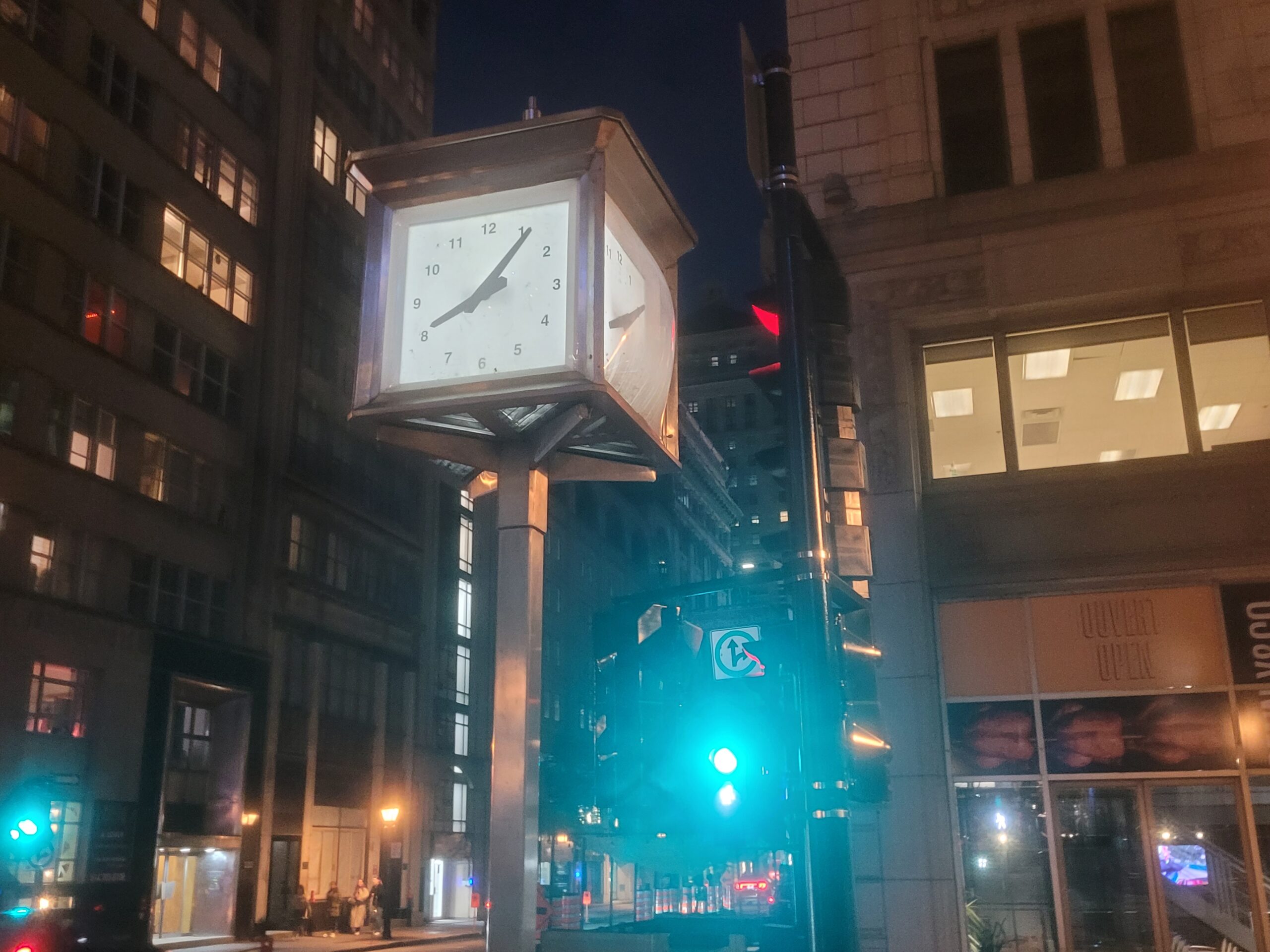


Comments (0)